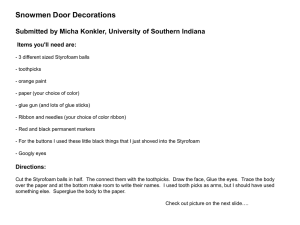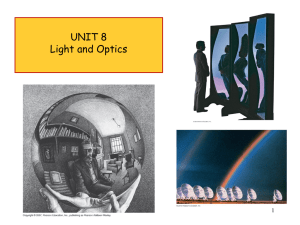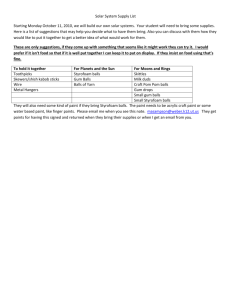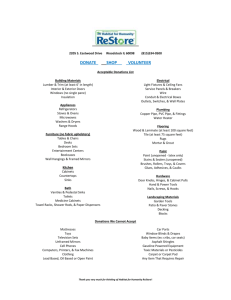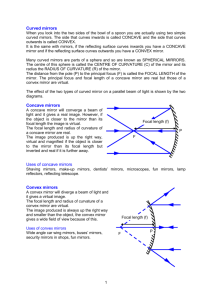Spherical Reflections - Seattle Central College
advertisement
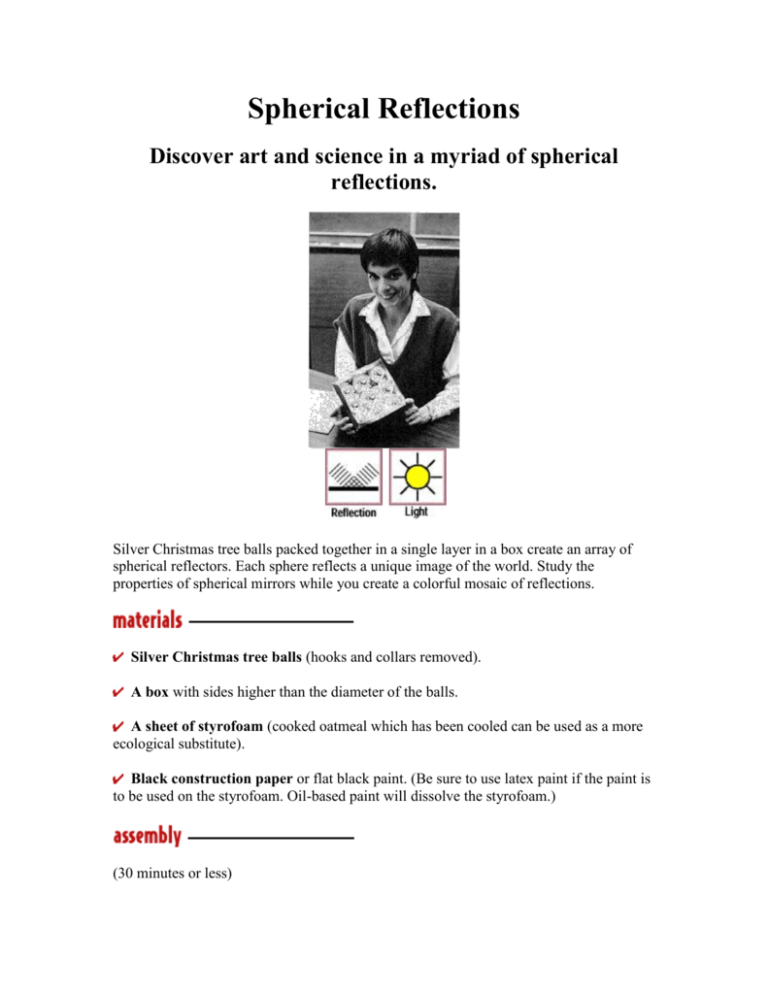
Spherical Reflections Discover art and science in a myriad of spherical reflections. Silver Christmas tree balls packed together in a single layer in a box create an array of spherical reflectors. Each sphere reflects a unique image of the world. Study the properties of spherical mirrors while you create a colorful mosaic of reflections. Silver Christmas tree balls (hooks and collars removed). A box with sides higher than the diameter of the balls. A sheet of styrofoam (cooked oatmeal which has been cooled can be used as a more ecological substitute). Black construction paper or flat black paint. (Be sure to use latex paint if the paint is to be used on the styrofoam. Oil-based paint will dissolve the styrofoam.) (30 minutes or less) Cut the styrofoam to fit the bottom of the box. (If you prefer not to use styrofoam, pour in freshly cooked oatmeal thick enough to embed the neck of each bulb - about i/2 inch (1 cm) thick - and let it cool.) Cover the styrofoam or oatmeal with a piece of black construction paper cut to size, or paint the styrofoam or oatmeal flat black. Lay the balls in the box in a single layer, packed as closely as possible. Gently but firmly push the stem end of each ball into the styrofoam or oatmeal so that the stem is held securely. (If you're using construction paper, push the stem end of each ball into the construction paper so that it makes a mark, and then cut the paper at the marked points to make insertion into the foam easier.) (5 minutes or more) Look at the spherical mirrors from various angles. Notice that the image in each mirror is a little different from the image in the neighboring mirrors. That's because each mirror "sees" the world from a slightly different vantage point. Notice that if you point your finger at one sphere, the image of your finger in all the other mirrors will point at the chosen mirror. Also notice that your image is very small in the mirrors, and that it appears quite far away. Each Christmas tree ball is a convex mirror - a mirror that curves out toward the source of light. Convex mirrors reflect images that are smaller than life-sized. In the ray diagram above, notice the reflection of two rays of light from a particular point at the tip of the pencil. Your eye and brain follow these reflected rays backward along a straight line to their apparent intersection behind the mirror. All other reflected rays from the point also seem to originate at this intersection. The reflected rays from all other points on the pencil also appear to intersect at specific points behind the mirror. All these intersection points put together create what's called a virtual image. Convex rearview car mirrors have a written warning cautioning that objects are actually closer than they appear. Your brain assumes that when an object that is known to be large - a car, for instance - has a small image in a mirror then the object is far away. In a convex mirror, however, an image that appears quite small can actually be very close. Convex mirrors are often used as security mirrors in stores, since they reveal a broad field of view.




